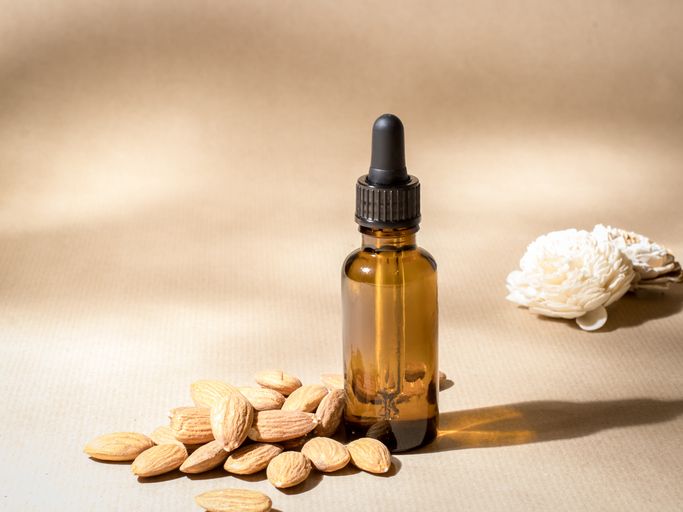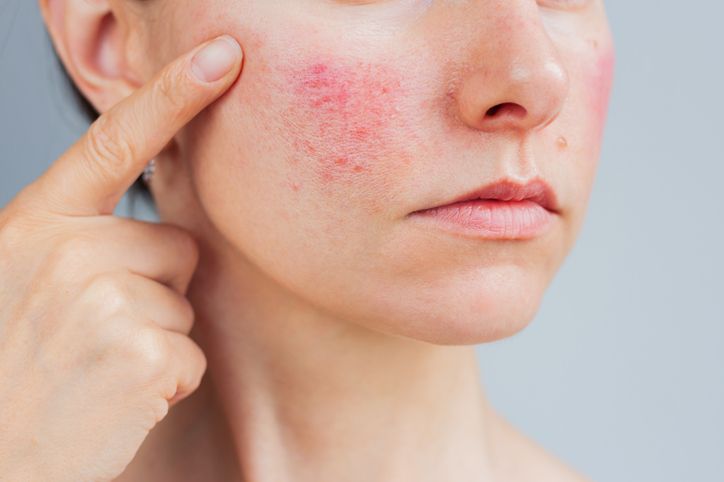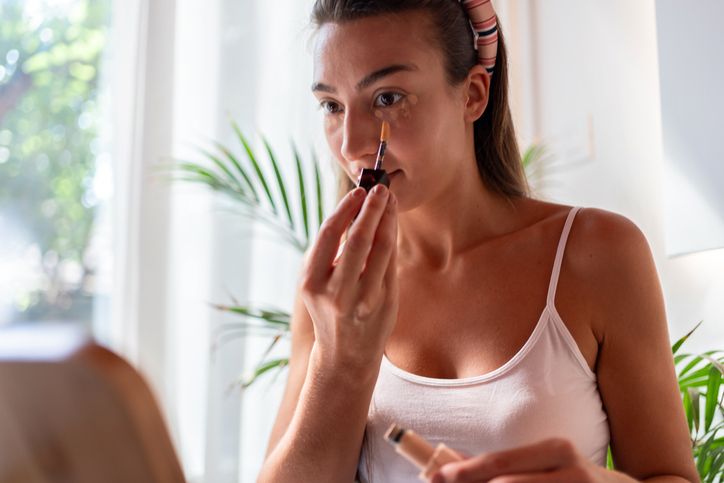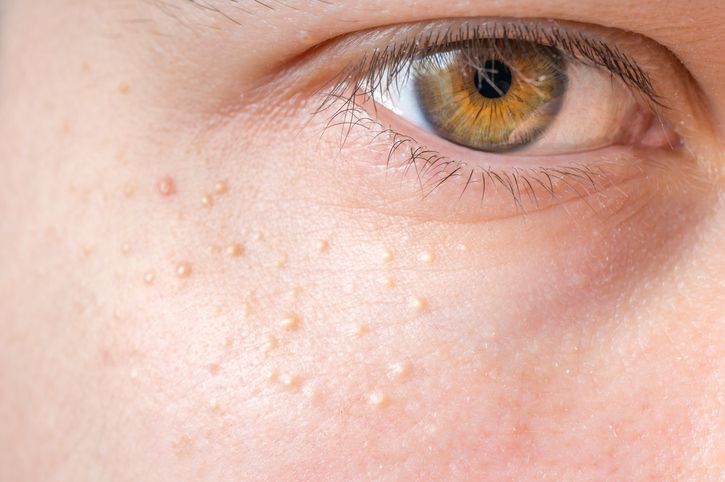- Home
- Trend
- Weight Loss Strategies
- Acne Tips
- Hair Health Information
- Blemish Removal Tips
- Acne Scar Removal Tips
- Muscle Building Techniques
- Intimate Care Tips
- Postpartum Intimate Care
- Eye Bags Wiki
- Tips for Face Slimming
- Secret of Permanent Hair Removal
- Breast Enlargement Tips
- Cure to Snoring
- Marionette Lines
- Skin-Tightening Secrets
Is thinning hair an early sign of hair loss and balding? What causes hair to become finer? Could issues like receding hairlines, frontal hair loss, M-shaped hairlines, male pattern baldness, seborrheic alopecia, or even "Mediterranean baldness" be related? Thinning hair often comes hand in hand with sparser, reduced hair volume. In this article, we explore the causes of thinning hair, how to prevent it, and ways to treat it—so we can all regain thick, healthy, dark locks!
1. What Causes Hair to Thin?
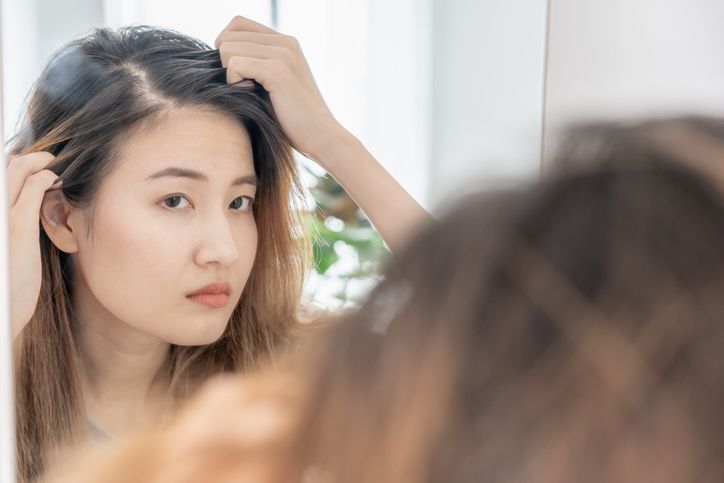
Cause 1: Androgenetic Alopecia (Male/Female Pattern Baldness)
The main culprit behind thinning hair is often hereditary androgenetic alopecia. While the exact cause isn’t fully understood, in short, a “hair loss gene” causes metabolites of androgens to attack hair follicles. This leads to inflammation and miniaturisation of follicles, disrupting the hair growth cycle. The growth phase becomes shorter, new hair doesn’t receive enough nourishment or time to grow, and strands become fine, fragile, short, and prematurely enter the shedding phase. Both men and women can develop this condition. If your diet is balanced and you're not lacking nutrients, a sudden onset of thinning hair is likely a genetic issue.
Cause 2: Seborrheic Alopecia
Another common cause is seborrheic alopecia—also known as oily scalp hair loss—which accounts for over 45% of hair loss cases. Key signs include excess sebum on the scalp, itchiness, foul-smelling scalp, and frequent scalp acne. Early signs include itching and hair fall, followed by the regrowth of finer, weaker, yellow-toned hair. If left untreated, inflammation of the scalp can worsen, potentially leading to follicle damage and baldness.
Cause 3: Poor Nutrition, Fad Diets, and Picky Eating
Hair can be a mirror of your overall health. Because hair and nails are made of rapidly growing protein-based tissues, they’re among the first to show signs of nutritional deficiency. Hair needs protein, B vitamins, iron, copper, and zinc to grow. A lack of these nutrients leads to weakened, thinning strands that fall out before reaching their full length. Rapid weight-loss diets and intense dieting often trigger hair shedding. Stress also suppresses hair growth.
Cause 4: Qi and Blood Deficiency, Liver-Spleen-Kidney Imbalance (TCM View)
In Traditional Chinese Medicine (TCM), thinning hair, premature greying, and dull yellowish strands are common symptoms linked to internal imbalances. According to TCM, hair is nourished by blood. If blood and qi are weak, or if the liver, spleen, and kidneys are underperforming, the body can’t effectively absorb or transport nutrients. Conditions like blood stagnation, heat in the blood, or qi deficiency can lead to hair loss. Only by addressing these root imbalances through holistic treatment and lifestyle adjustments can one truly reverse thinning and balding.
Cause 5: Lack of Melanocytes & Brownish Hair Discoloration
Thinning hair often comes with fading color—brown, dull, or yellowish hues. While many think melanin only affects color, it's closely tied to hair health. Experts say chronic illness, severe iron-deficiency anemia, and malnutrition reduce melanin production, turning hair brown or even prematurely white. Western doctors suggest blood tests and nutrient supplementation, while TCM recommends eating black-colored foods to “nourish like with like.”
2. Does Thinning Hair Lead to Hair Loss?

Yes—thinning hair is an early warning sign of hair loss.
Unless the hair follicle is aging naturally, any sudden drop in follicle vitality means something is wrong with scalp health—usually chronic inflammation or lack of nutrition. Damaged follicles can’t repair themselves without proper care. Over time, they shrink and die. Adults have a finite number of follicles; once lost, they can’t regenerate. Neglecting them could lead to early baldness.
免費體驗
F8 Hair Regrowth Treatment
1 Minute Self-Registration
Date should not be before minimal date
3. Who’s Most Prone to Thinning Hair?
Thinning hair isn’t just a problem for older adults. From a Western perspective, both men and women can experience it after puberty if they carry the genes for hereditary hair loss. People with oily scalps or weakened immune systems are also at higher risk. From a TCM standpoint, those with qi and blood deficiencies, weak liver/spleen/kidneys, or excess internal heat are more likely to develop thinning hair.
4. How to Prevent Thinning Hair?
1. Avoid Sharing Shampoo with the Whole Family
Start by reassessing your shampoo and how often you wash your hair. A good shampoo shouldn’t leave your hair oily, dry, or itchy within two days. If you experience dandruff or immediate itchiness after washing, your shampoo may be damaging your scalp’s protective barrier—potentially inflaming follicles and causing thinning. One shampoo doesn’t fit all—find the right one for your scalp, not your family’s.
2. Use Anti-Dandruff Shampoo
If your scalp is oily, flaky, or itchy, try using an anti-dandruff shampoo. Unlike hair-loss shampoos, these often contain active ingredients that reduce inflammation and kill bacteria/fungi—not just control oil. Keeping your scalp clean can reduce the risk of thinning hair progressing to conditions like folliculitis or seborrheic dermatitis.
3. Eat More Iron- and Zinc-Rich Foods
Crash dieting without exercise? Many women who rapidly lose weight experience thinning, brittle hair, hair loss, and sagging skin. In clinical settings, those suffering from body image anxiety often lack zinc and iron—two key nutrients for hair health. Zinc supports hair growth speed, while iron affects density. Always get a blood test before supplementing.
4. Cut Back on Carbs
High-GI (glycemic index) carbs can increase sebum production. Doctors suggest limiting excessive carbs and sugar. People with oily scalps should also avoid smoking, alcohol, and spicy or strongly flavored foods that stimulate oil production.
5. Monitor Hormone Levels
Women dealing with thinning hair should be mindful of hormone changes. Birth control pills, hormone injections, and even postpartum changes can lead to thinning or temporary hair shedding.
6. Get Enough Sleep
Your hair follicles need sleep too! They start their "repair phase" about two hours after you fall asleep, and they need at least 3 continuous hours of rest to function properly. This allows for optimal nutrient delivery and helps prevent premature hair loss.
7. Exercise Regularly
If your hair is thinning due to poor circulation or low immunity, regular aerobic exercise (at least 3 hours weekly) can help improve blood flow and reduce internal dampness—beneficial for those with cold limbs, heaviness, and dull hair.
8. Eat a Balanced Diet
Instead of relying on "superfoods" like sesame or eggs, just focus on balanced daily meals. City dwellers usually consume a variety of foods each day. Avoiding extreme dietary habits helps prevent stress-related hair loss.
9. Practice Good Hair Care Habits
To stop thinning hair from becoming bald, follow proper scalp and hair care routines. Adjust your washing frequency based on oil levels, avoid frequent dyeing or heat styling, don’t tie your hair too tight, and avoid applying conditioner or styling powder to the scalp. If you’ve maintained a healthy lifestyle but your hair is still thinning, seek medical advice early.
5. How Can People with Thinning Hair Dye Their Hair?
While hair styling is not advised during thinning episodes, you may still want to cover greys. The most common issue with dyeing is allergic contact dermatitis—caused by chemical irritation to the scalp, especially near the forehead where dye often sits longer.
Tip: Always get someone to help you apply hair dye and keep the dye at least 0.3 cm away from the scalp to minimize irritation.
免費體驗
F8 Hair Regrowth Treatment
1 Minute Self-Registration
Date should not be before minimal date
6. TCM Remedies to Improve Thinning Hair
TCM links thinning hair and scalp issues to imbalances in the liver, spleen, and kidneys. Many patients show signs of liver and kidney deficiency with damp-heat and blood stasis. TCM internal treatments typically focus on “clearing the liver, nourishing the kidneys, reducing oil, and promoting hair growth.” A guest professor from the CUHK Institute of Integrative Medicine recommends the following methods:
1. Cypress Leaf Steam Treatment
Ingredients: 1 tael cypress leaves, 5 catties rice wine, 0.5 tael goosegrass.
Instructions: Trim, pan-fry, and sun-dry the cypress leaves. Soak both herbs in rice wine for 3 months. Dab the liquid on bald spots using a cotton swab, then steam or apply heat for 15 minutes to enhance absorption.
2. Eat 150g of Meat Daily
For blood deficiency: consume at least 150g of meat and healthy fats daily.
For oily scalps: chew thoroughly to aid digestion, eat rice and vegetables first, then meat. Avoid heaty and sugary foods.
3. Massage Baihui Acupoint
Located at the crown of the head, Baihui is an accessible acupoint for promoting hair growth. Lightly tapping or massaging it helps improve blood flow and circulation in the scalp, supporting hair regeneration.
7. Can Hair Become Thicker Again? Try LLLT Laser Treatment
If thinning hair is left untreated, it may worsen into visible scalp patches, hair breakage, or even baldness. The earlier the intervention, the better the outcome. In addition to daily hair care, advanced treatments can help.
Our F8 Hair Regrowth Treatment uses 650nm LLLT low-level laser technology to target the scalp directly. This stimulates blood flow, promotes capillary growth, and boosts follicular protein synthesis—restoring a healthy hair growth cycle.
The F8 program also includes medical-grade serums that purify pores, exfoliate the scalp, remove chemical residue, balance oil levels, and deeply hydrate—revitalizing your “soil” so strong, healthy hair can grow again.
Thinning hair might be the first sign of serious hair loss—address it early to stop the cycle!
Try it Now: Perfect Medical F8 Hair Regrowth Treatment免費體驗
F8 Hair Regrowth Treatment
1 Minute Self-Registration
Date should not be before minimal date
FAQ

What causes hair to thin?
The most common reason for thinning hair is hereditary androgenetic alopecia. A “hair loss gene” causes androgen by-products to attack hair follicles, leading to inflammation, miniaturisation, and a disrupted hair cycle. The growth phase shortens, new hair doesn’t get enough time or nutrients to grow, and strands become fine, brittle, and short. Eventually, they enter the resting and shedding phases prematurely and fall out.
Does thinning hair lead to hair loss?
Yes—thinning hair is often a precursor to actual hair loss.
How can I prevent my hair from thinning?
Avoid sharing shampoo with your entire family: Everyone has different scalp types. You should choose shampoo according to your own scalp needs and the season to maintain oil-water balance. A one-size-fits-all shampoo may not meet individual needs.
Can people with thinning hair dye their hair?
Yes, but with care. The most common scalp issue from hair dye is contact dermatitis, which causes itching, redness, and even burning due to harsh chemicals. When dyeing hair yourself, the front hairline often gets dyed first, leaving the dye on that area longer and increasing the risk of irritation.
Are there TCM remedies for thinning hair, oily scalp, or hair loss?
Yes—here are three commonly recommended Traditional Chinese Medicine approaches:






